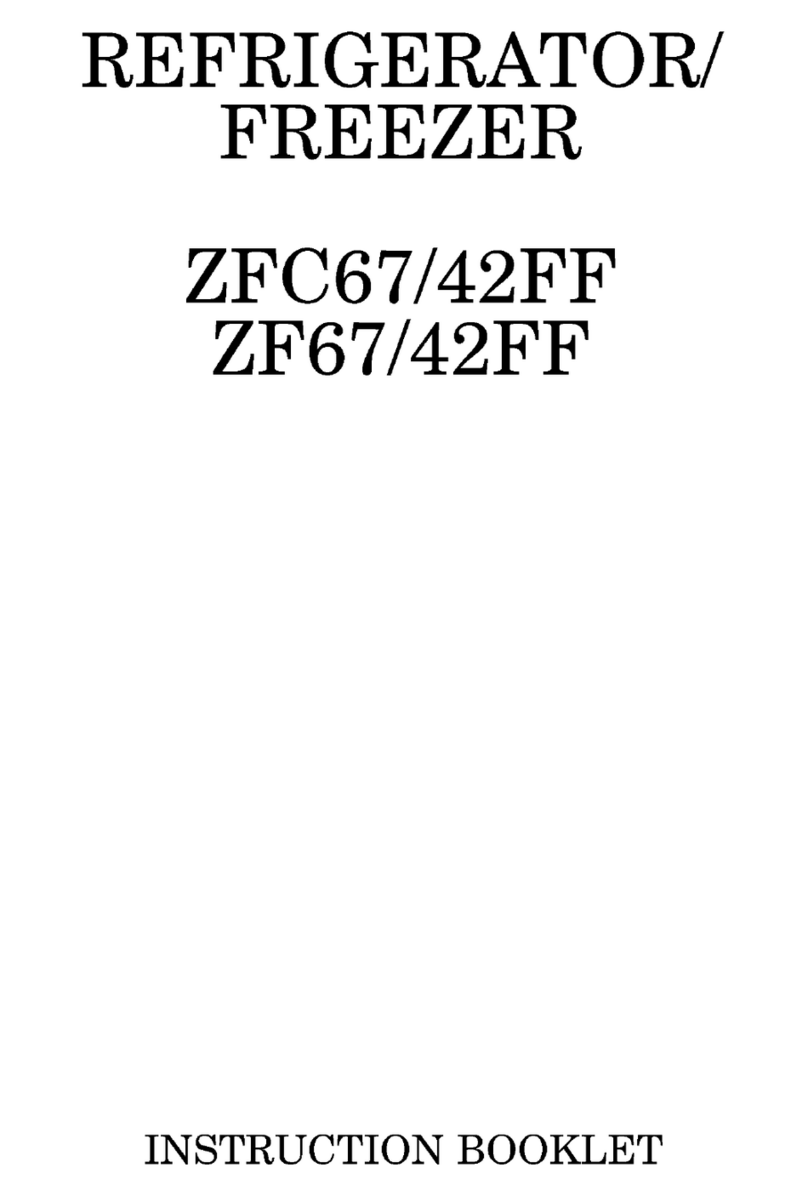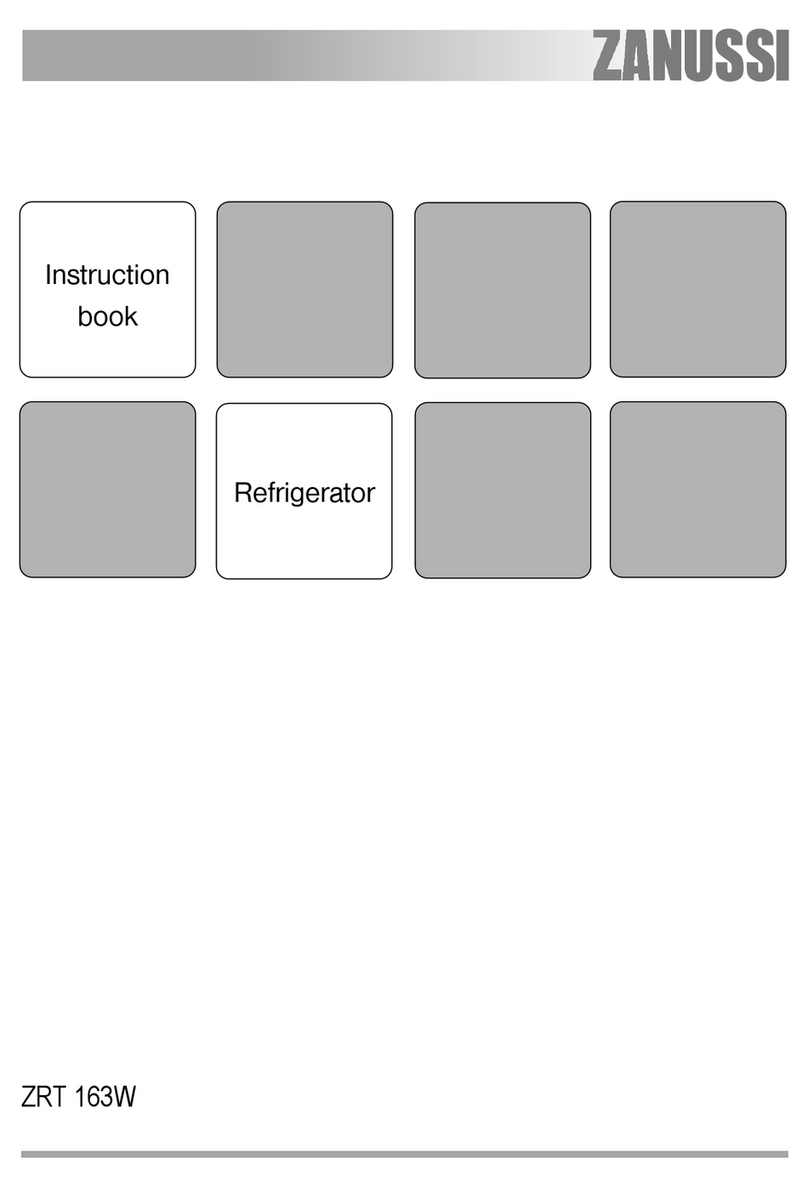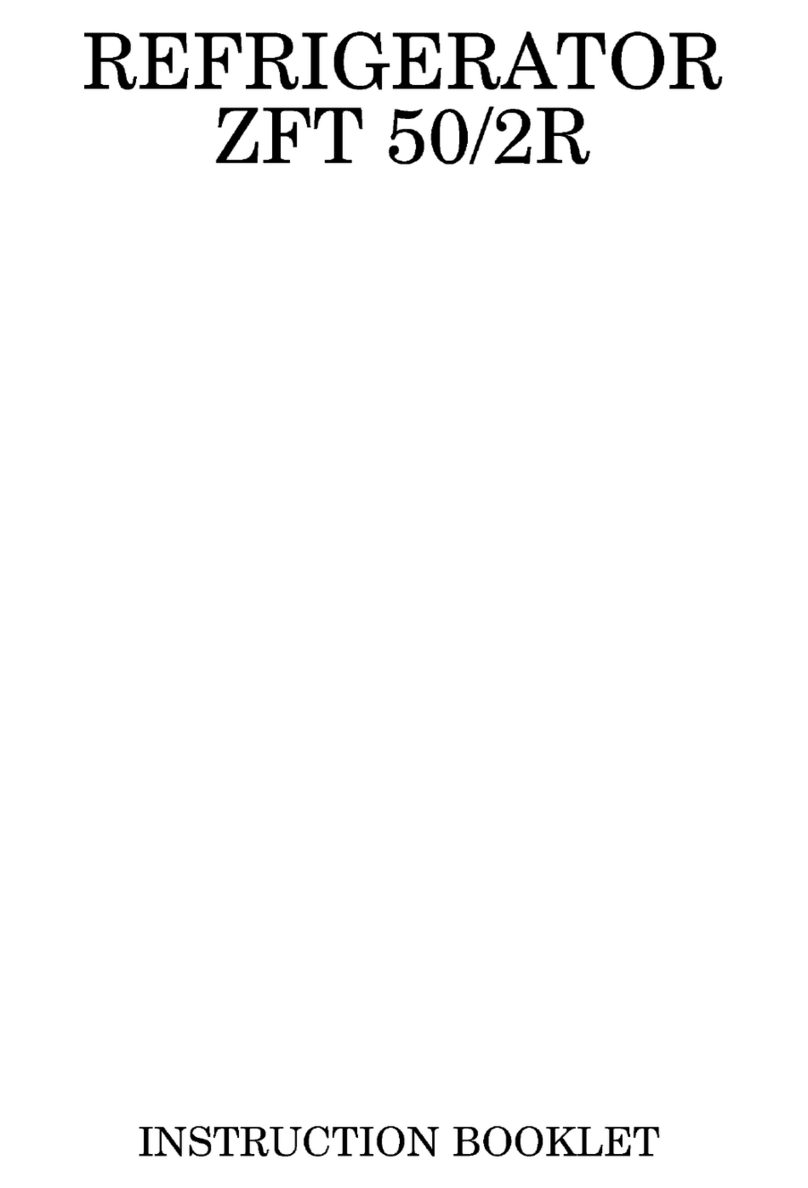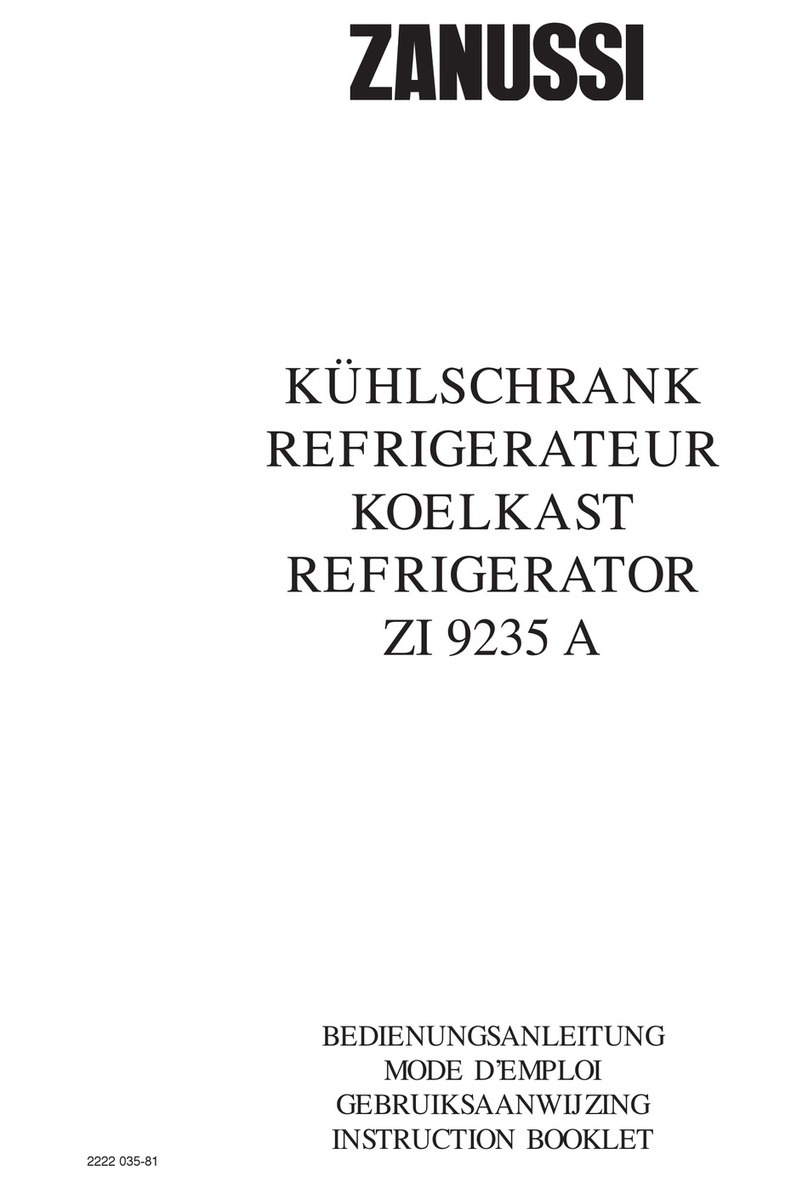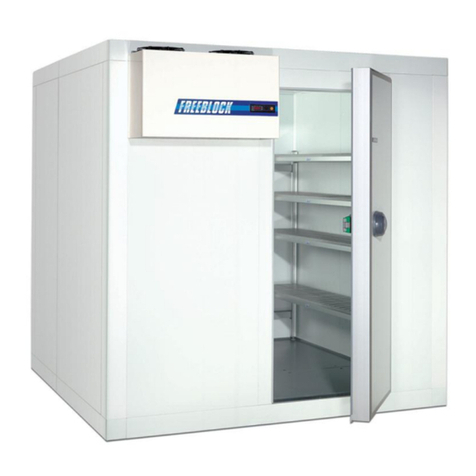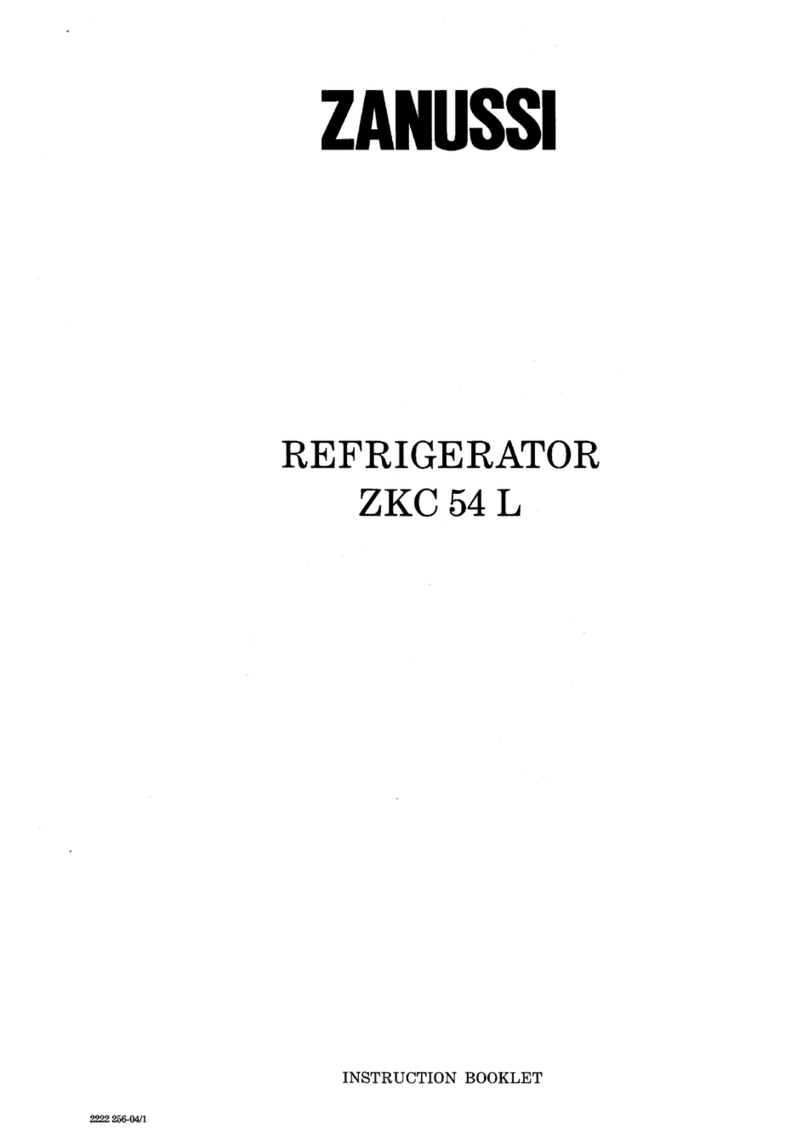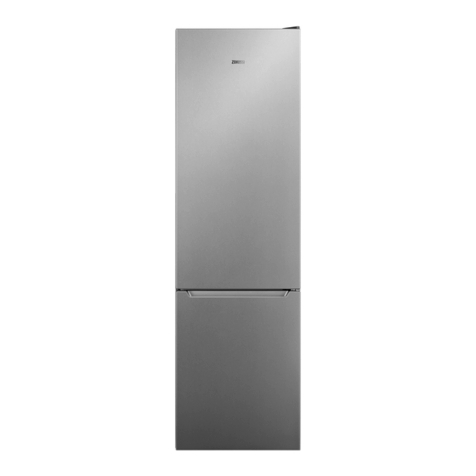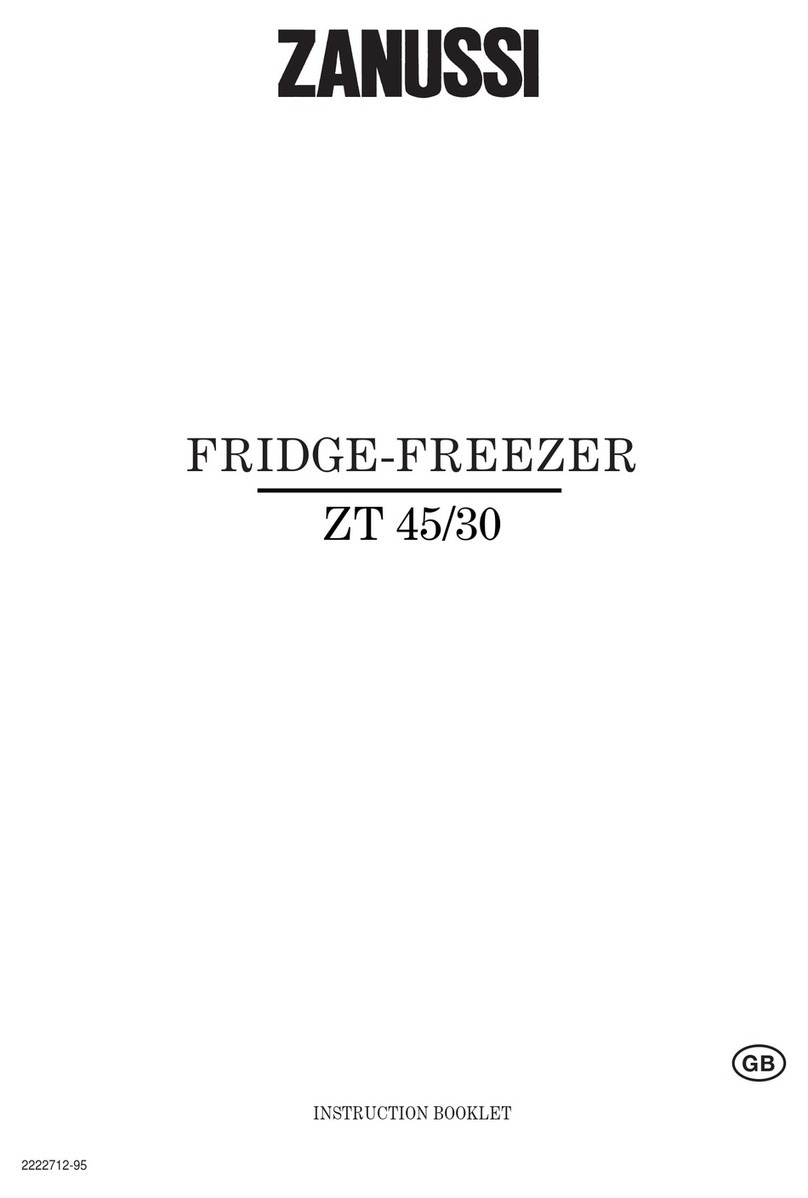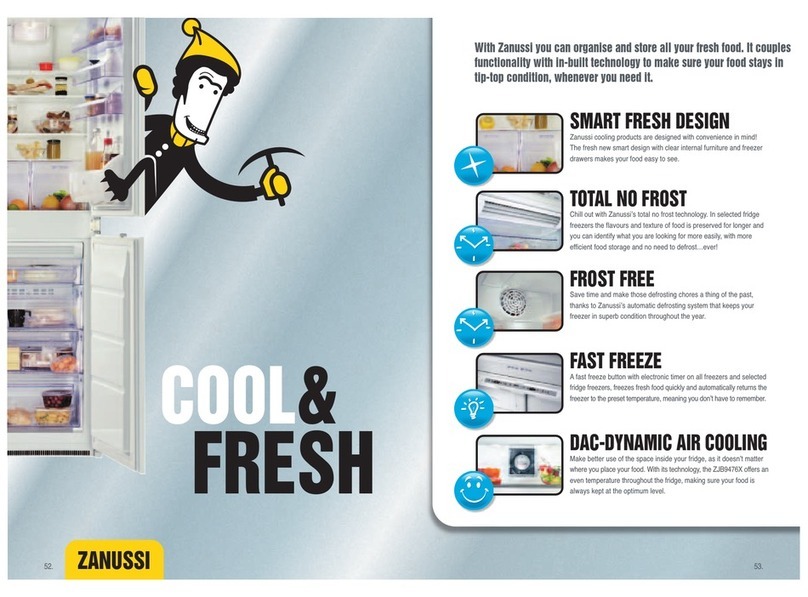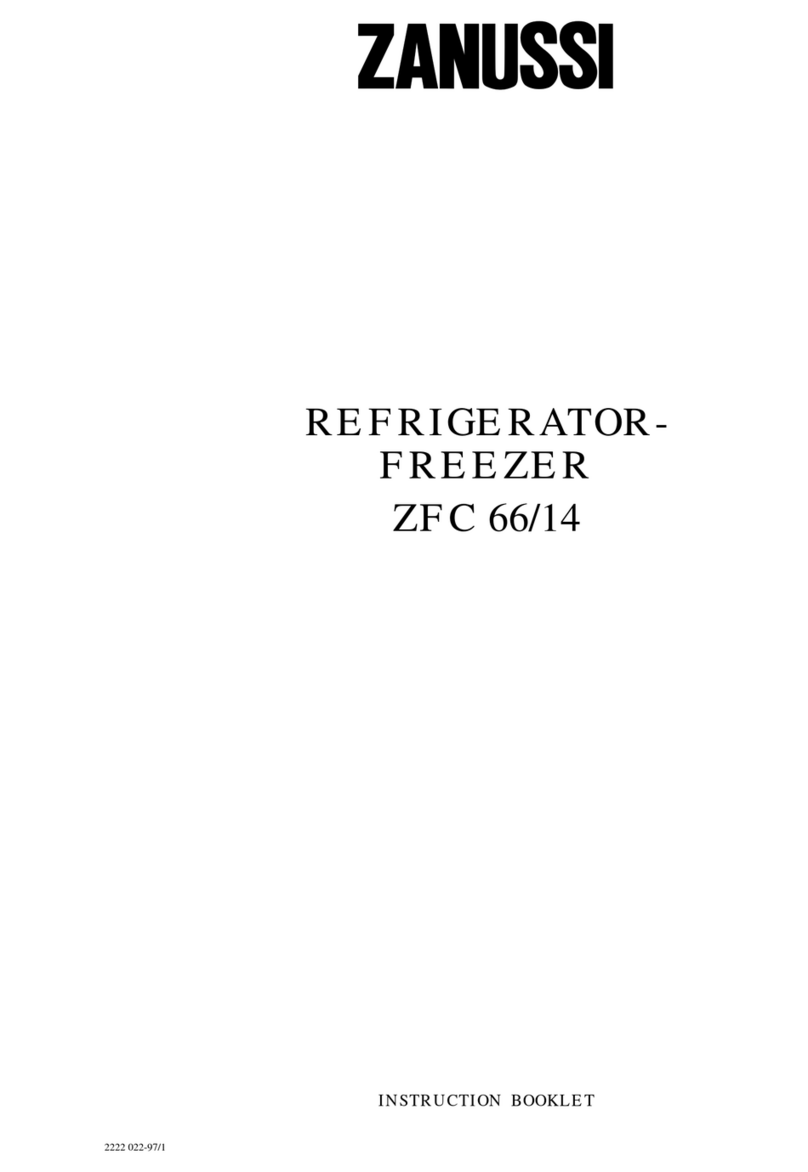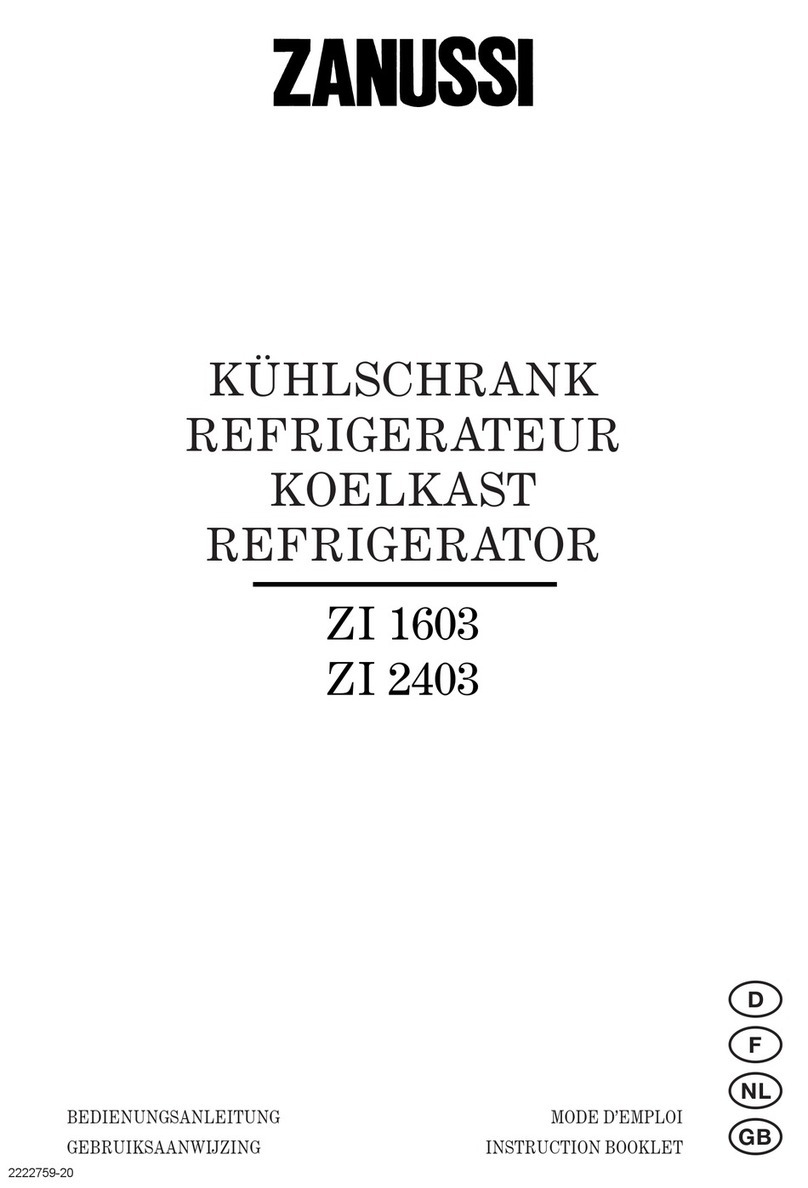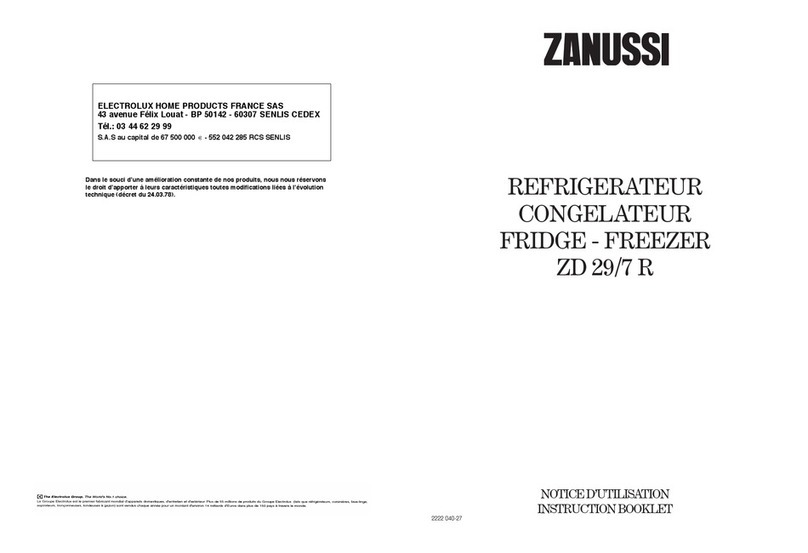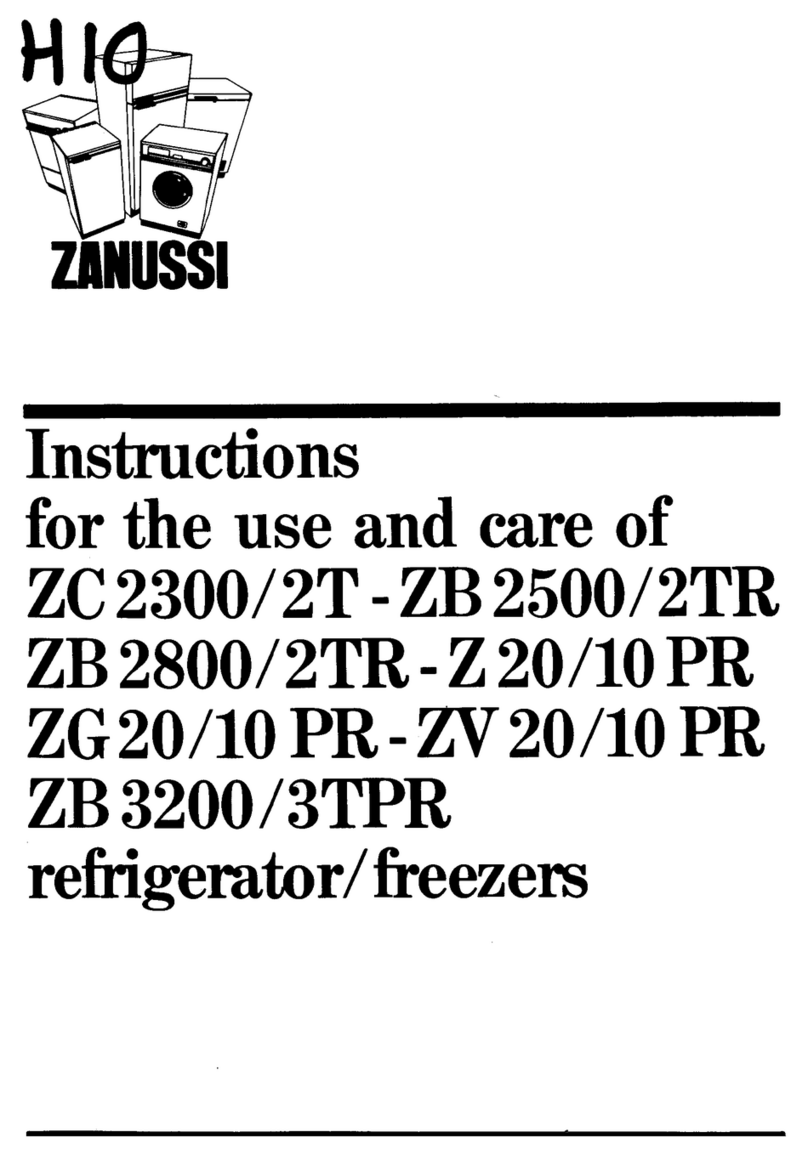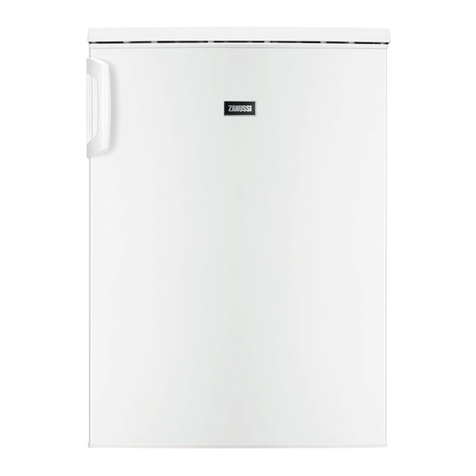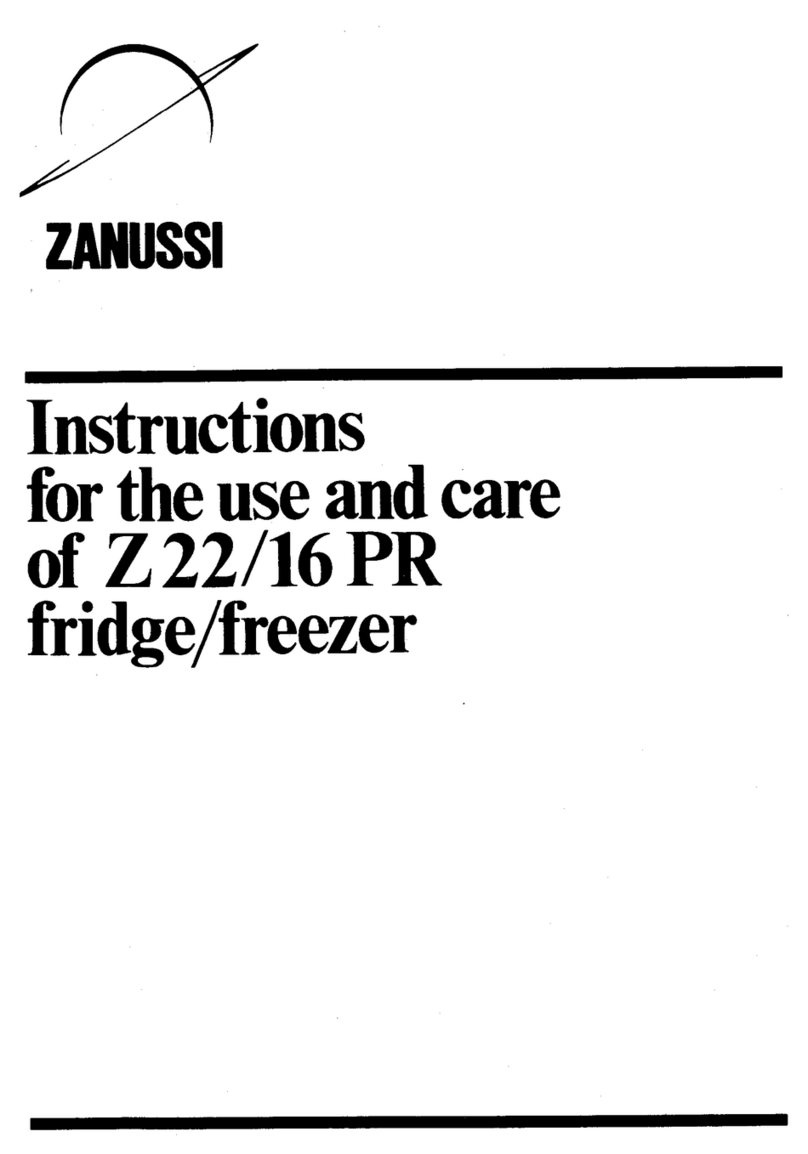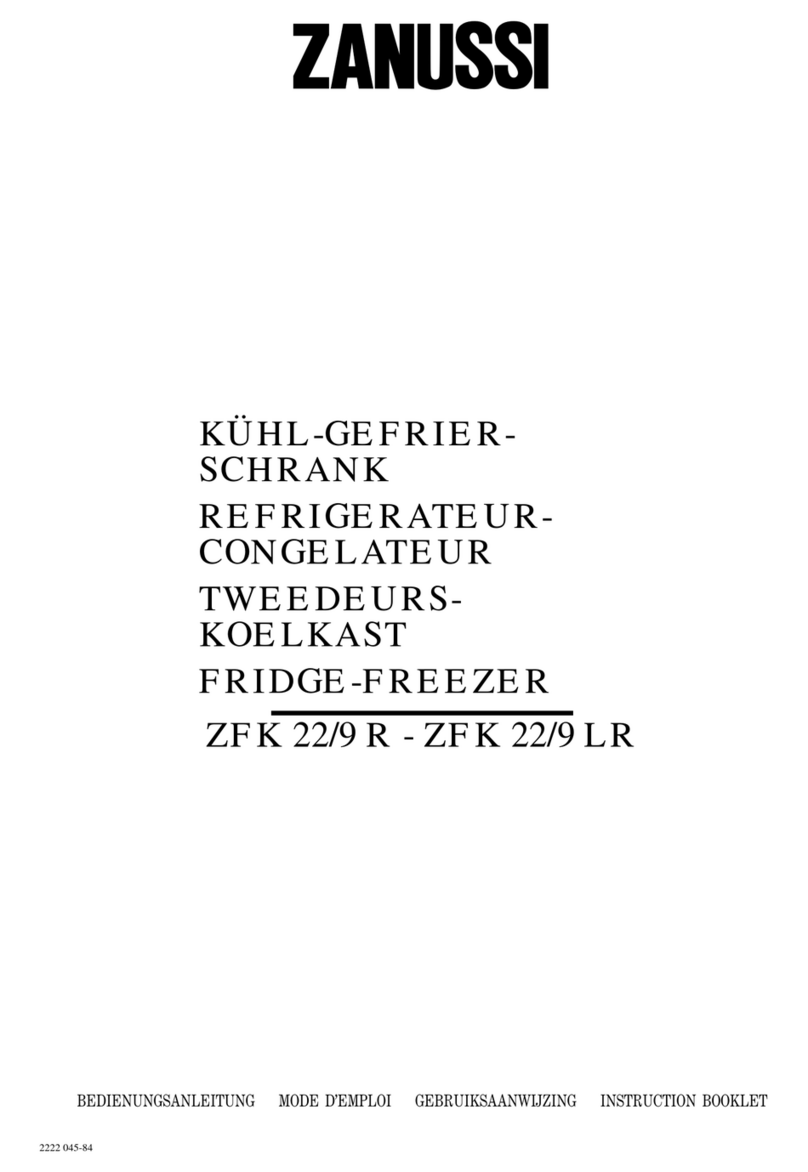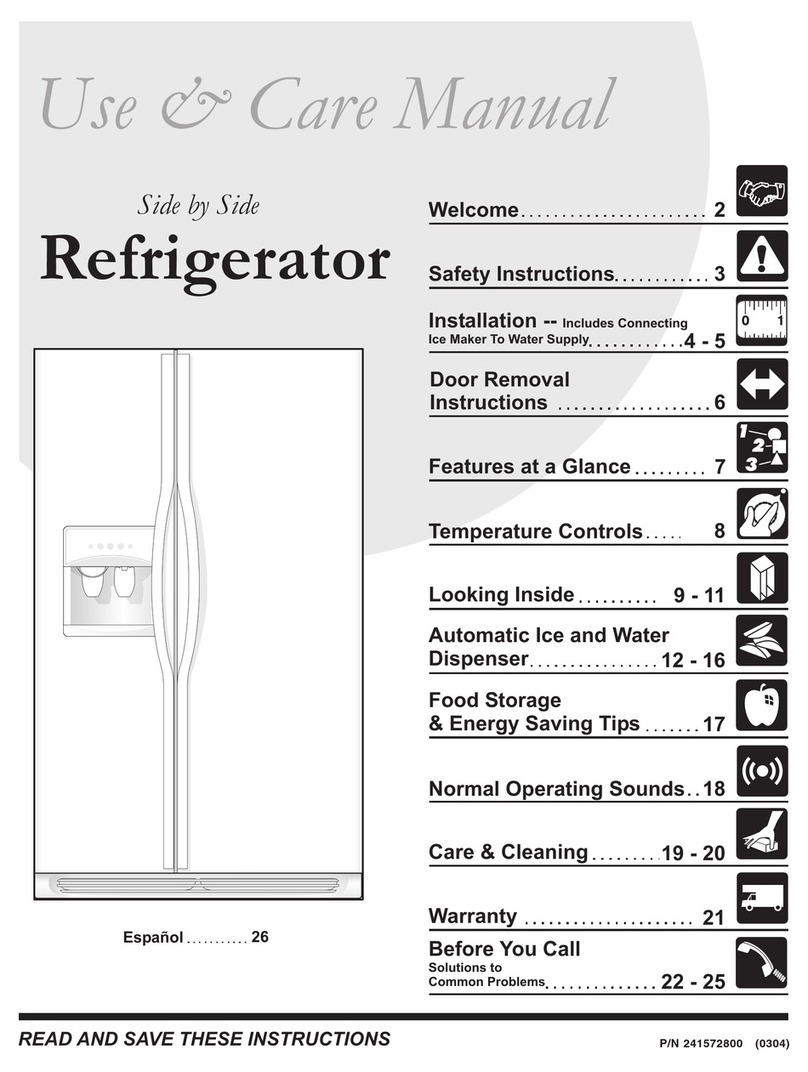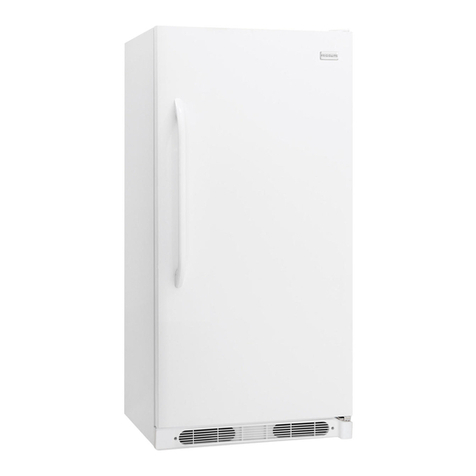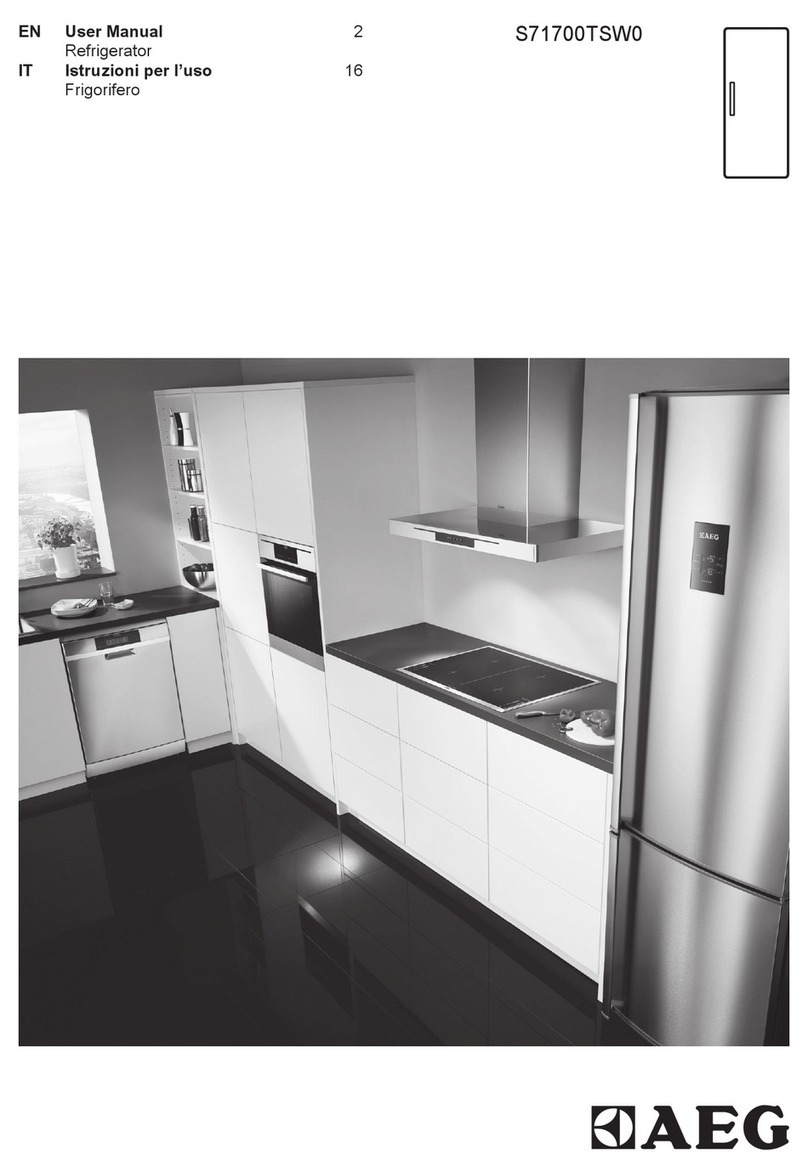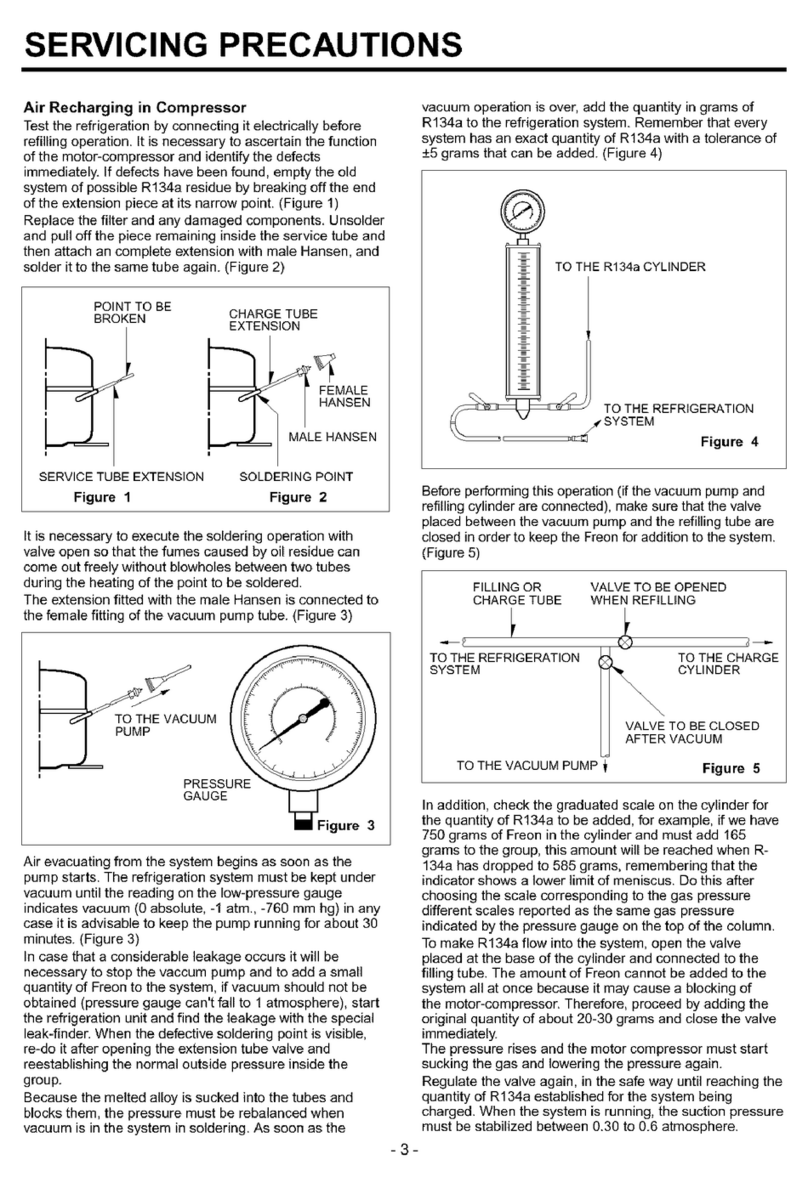26
How to make ice cubes
To make ice cubes fill the enclosed ice cube tray
with water and put it to the frozen food
compartment. Wetting the bottom of the tray and
setting thermostatic control knob to maximum
position can shorten preparing time. After finishing
do not forget to reset the thermostatic control to the
suitable position.
Ready ice cubes can be taken out of the tray under
running water then twist or hit it. If the ice tray
freezes to the compartment, avoid using metal
tools or knife to take it out as the cooling system
can be damaged.
Freezing
Freezing different products should always be done in
the freezing compartment or rather on its cooling plate
after proper preparing.
Depending on quantity to be frozen the freezing
procedure can be the following:
1. If the quantity to be frozen is not more than 3 kg
1.1. Set the thermostat knob to position 3.
1.2. Put the quantity to be frozen into the freezing
compartment (max. 3 kg).
1.3. Operate the appliance in this position for 24
hours.
1.4. After 24 hours reset the thermostatic knob to
a position adequate for you or leave it in
position 3, which generally meets the
requirements of everyday cooling. Replace
the frozen products into the wire basket
(ZLKF 261) or baskets (ZLKF 301) in the
storing compartment.
2. If the quantity to be frozen is between 3-12 and
18 kg (using maximum freezing capacity)
2.1. Push the indicating switch (it moves outwards
and the indicator lamp gives light) and put the
quantity to be frozen into the freezing
compartment (max. 12 or 18 kg).
2.2. Operate the appliance in this position for
24 hours.
2.3. After 24 hours turn off the indicating switch
(push it and the lamp will go out) and replace
the frozen products into the wire basket
(ZLKF 261) or baskets (ZLKF 301) in the
storing compartment.
Never freeze food in bigger quantity than
given in the 'Technical data' at the same
time, otherwise freezing will not be thorough and
after dissolving various deterioration may take
place (losing taste and aroma, lysing, etc.).
Do not make ice during freezing preferably,
because making ice reduces freezing capacity.
Storing in the freezer
It is practical to replace frozen products into the wire
basket(s) after freezing has finished. Doing this you
could make room in the freezing compartment for
another freezing. Intermediate freezing does not
deteriorate foods already stored.
Do not forget to keep to the storage time given
on the packaging of frozen products if you buy
them frozen. To store home-frozen products see the
storing instructions placed in the door of the freezer.
Symbols signify the various foods, numbers mean
maximum storing time given in months.
How to use the freezer
Some useful information
and advice
The variable shelves are worth paying attention
to, which increases the usability of the fresh food
compartment considerably. Rearranging the
shelves is also possible when the door is open at
an angle of 90°.
After opening and closing the door of freezer
vacuum will rise inside the appliance because of
the low temperature. So wait 2-3 minutes after
closing the door - if you want to open it again -
while inner pressure equalises.
Take care of operating the freezer at a position of
thermostatic control so that the inside
temperature can never go above -18 °C, since
temperature higher than this can deteriorate
frozen foods.
It is practical to make sure of faultless operation
of the appliance daily so as to notice possible
failure in time and prevent deterioration of frozen
foods.
It is safe to store quick-frozen, frozen foods
only if they have not dissolved even for a short
time until placing them into the freezer. If the deep-
frozen food has already dissolved, refreezing is not
recommended, it has to be used up as soon as
possible.
GB

